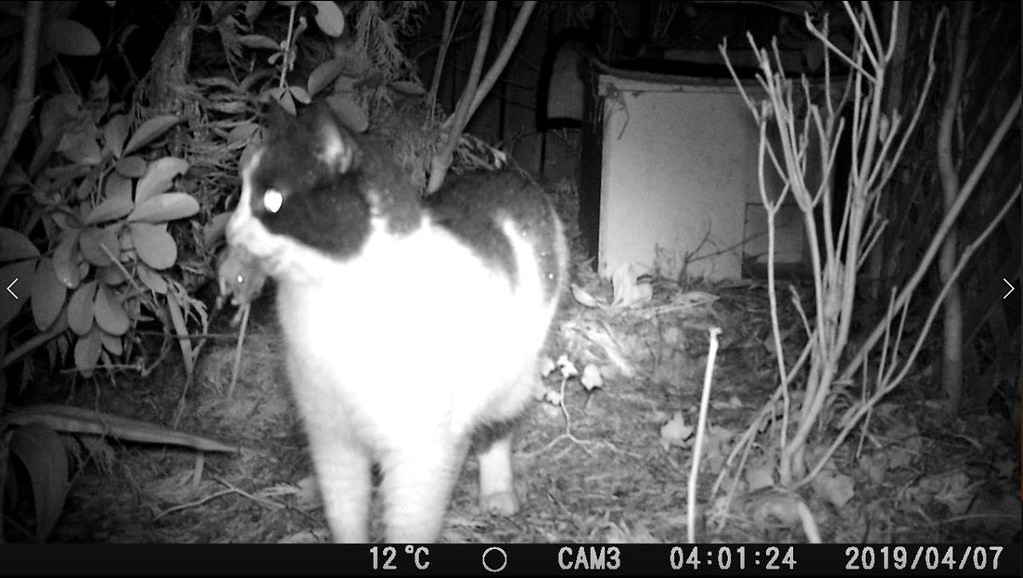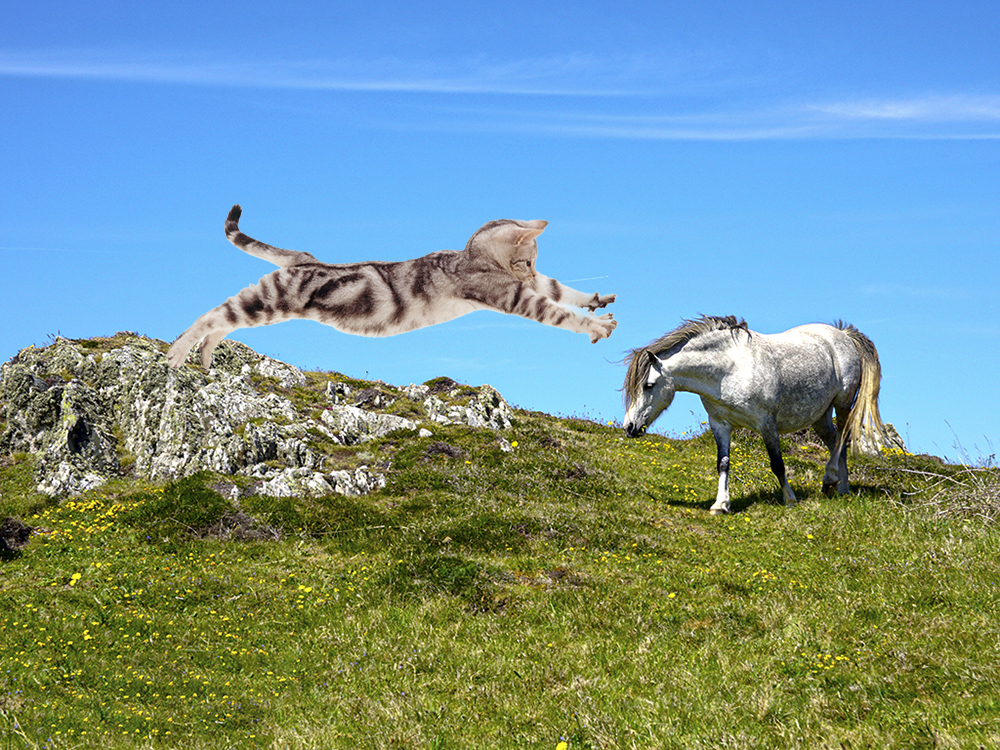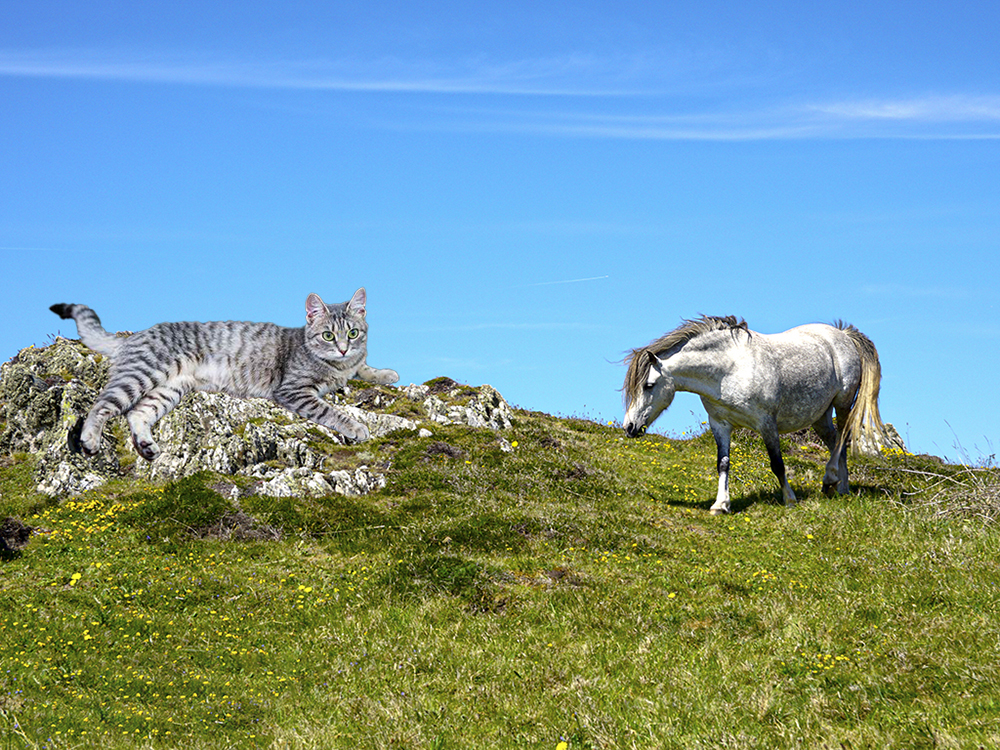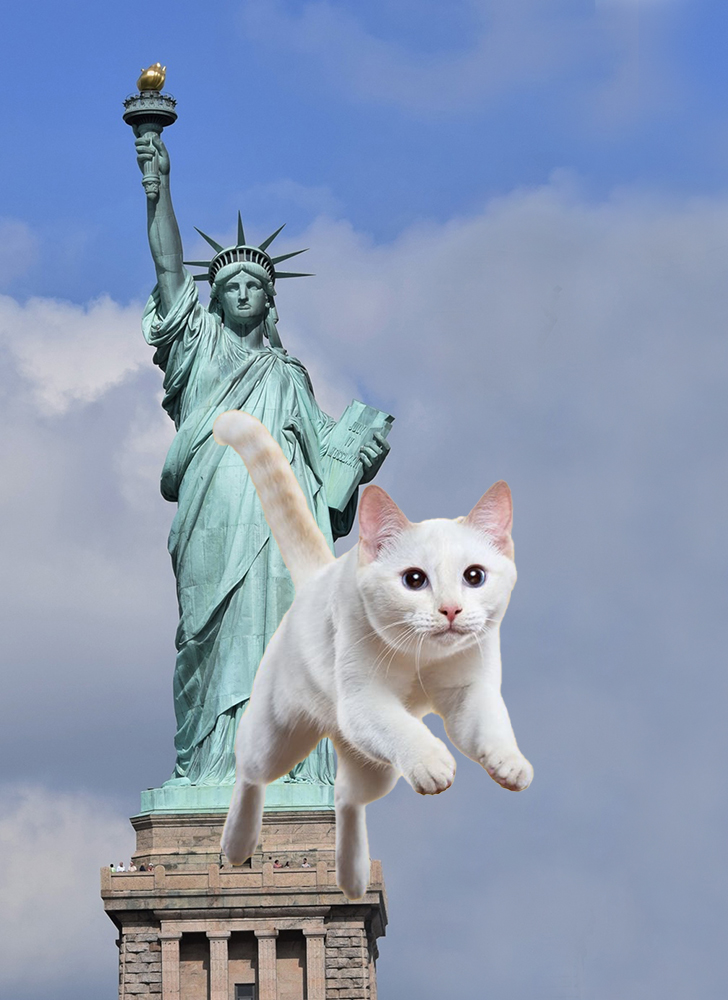- Messages
- 10,382
- Name
- John
- Edit My Images
- Yes
I read an article a few days ago on so-called big-cat sightings in the UK. I thought it might be interesting for some to share it with.These sightings have been going on for many years with little evidence. Unfortunately, no-one from TP has had a sighting and their camera with them so the photos which have been taken are blurry and unconvincing 
Dr Andrew Hemmings of the Royal Agricutural University,Cirencester (Gloucestershire)says that he's idntified 5 animal carcasses with tooth imprints on their bones that could only have been made by a non-native cat the size of a leopard or a puma.He concentrated on the imprints of the carnassial teeth used for shearing and gnawing the carcas because they differ distinctly from dogs,native carnivores and cats. Over the past six years his team have analysed more than 100 skeletal remains and from these 16 have had good carnassial imprints of which five they are confident were made by a medium to large -sized felid (cat family) animal. The other 11 were suggestive of smaller carnivores but the other five do fit the markings for a puma or melanistic (black) leopard. Five of Dr Hemming's university colleagues have reported seeing a big cat with one having seen a mountain lion,also known as a puma, vaulting a dry stone wall. There are a lot of those type of walls in the Cotswolds. . What the team did was to feed pumas and black leopards (at Exeter zoo) as a control group to see whether the tooth imprints matched their samples which they did. They intend to publish their findings in a peer-reviewed journal. For the past six years they have worked with a network of informants and witnesses who alert them to suspicious deer and sheep kill sites and they recover the carcasses for analysis.
Big cats are believed to have been released into the wild during World War 11 when meat for their food was scarce and another release in the months leading up to the Dangerous Wild Animals Act 1976 which restricted the keeping of certain species. The leader of the national network is Rick Minter who worked as a policy officer with the Countryside Commison Agency for 18 years and is an expert on big cats..Over the past 10 years he has recorded 1300 sightings made by people from across the UK. One report was of a black leopard that followed two dog walkers in May, this year near Oldbury-on-Severn here in Gloucestershire. It followed them for a minute. He sets up trail cameras in the Cotswolds. About three quarters of the sightings are of the black leopard, labrador-sized cats with an elongated body.,pronounced shoulder blades,thick tail and flat face with rounded ears.The others are mainly pumas..which are brown with slightly more pointed ears. In addition some lynx. Most sightings occur at dawn or dusk when the cats use the darkness as an advantage over their prey. In 2009 the Forestry Commission revealed that rangers had seen big cats twice while using thermal imaging cameras to conduct deer surveys in the Forest of Dean (Gloucestershire). Mr Minter said that 20-30 landowners know about big cats having been on their land with sightings made by game keepers or animal carcasses found carried into trees.. He said 80% of these reports were credible and because of the consistency of the sightings and the lack of signs of inbreeding and their skill at hunting deer and he believes there could be a breeding population of about 250 black leopards in the British countryside. He justifies this because most witnesses and informants are reliable people like the police,military personnel and scientists. Also, the way the black leopards kill is learnt and taught behaviour. Farmers will say it is so different from a dog killing a deer or sheep. It's so neat and tidy and clinical.
If there are so many why don't more people see them ? Mr Minter's answer is that there are at least 30,000 pumas in the western states of the US but encounters with people are incredibly rare and normally only when an animal is ill. It's the same with leopards in Asia.They live in the shadows. In native territories these cats would be hemmed into defined territories more by neighbouring cats and would walk more of the same routes, then you have a chance of photographing them if you set up trail cameras. Here in the Uk as there are not as many then territory is a much looser concept.
Why aren't bodies found ? Dr.Hemming says they tend to go to inaccessible places to die. On Vancouver Island where pumas are endemic, it's rare to see one alive and even rarer to come across a carcass.
Several big cats have been caught or killed. A lynx was shot in Devon in 1903. A puma was caught in a trap in Inverness-shire in 1980. It had gone to the Highland Wildlife Park zoo and was called Felicity.Two jungle cats were killed by cars in the 1980's, one in Hampshire and the other in Shropshire. In 1991 a lynx was shot near Norwich. It had killed 15 sheep.
Dr Andrew Hemmings of the Royal Agricutural University,Cirencester (Gloucestershire)says that he's idntified 5 animal carcasses with tooth imprints on their bones that could only have been made by a non-native cat the size of a leopard or a puma.He concentrated on the imprints of the carnassial teeth used for shearing and gnawing the carcas because they differ distinctly from dogs,native carnivores and cats. Over the past six years his team have analysed more than 100 skeletal remains and from these 16 have had good carnassial imprints of which five they are confident were made by a medium to large -sized felid (cat family) animal. The other 11 were suggestive of smaller carnivores but the other five do fit the markings for a puma or melanistic (black) leopard. Five of Dr Hemming's university colleagues have reported seeing a big cat with one having seen a mountain lion,also known as a puma, vaulting a dry stone wall. There are a lot of those type of walls in the Cotswolds. . What the team did was to feed pumas and black leopards (at Exeter zoo) as a control group to see whether the tooth imprints matched their samples which they did. They intend to publish their findings in a peer-reviewed journal. For the past six years they have worked with a network of informants and witnesses who alert them to suspicious deer and sheep kill sites and they recover the carcasses for analysis.
Big cats are believed to have been released into the wild during World War 11 when meat for their food was scarce and another release in the months leading up to the Dangerous Wild Animals Act 1976 which restricted the keeping of certain species. The leader of the national network is Rick Minter who worked as a policy officer with the Countryside Commison Agency for 18 years and is an expert on big cats..Over the past 10 years he has recorded 1300 sightings made by people from across the UK. One report was of a black leopard that followed two dog walkers in May, this year near Oldbury-on-Severn here in Gloucestershire. It followed them for a minute. He sets up trail cameras in the Cotswolds. About three quarters of the sightings are of the black leopard, labrador-sized cats with an elongated body.,pronounced shoulder blades,thick tail and flat face with rounded ears.The others are mainly pumas..which are brown with slightly more pointed ears. In addition some lynx. Most sightings occur at dawn or dusk when the cats use the darkness as an advantage over their prey. In 2009 the Forestry Commission revealed that rangers had seen big cats twice while using thermal imaging cameras to conduct deer surveys in the Forest of Dean (Gloucestershire). Mr Minter said that 20-30 landowners know about big cats having been on their land with sightings made by game keepers or animal carcasses found carried into trees.. He said 80% of these reports were credible and because of the consistency of the sightings and the lack of signs of inbreeding and their skill at hunting deer and he believes there could be a breeding population of about 250 black leopards in the British countryside. He justifies this because most witnesses and informants are reliable people like the police,military personnel and scientists. Also, the way the black leopards kill is learnt and taught behaviour. Farmers will say it is so different from a dog killing a deer or sheep. It's so neat and tidy and clinical.
If there are so many why don't more people see them ? Mr Minter's answer is that there are at least 30,000 pumas in the western states of the US but encounters with people are incredibly rare and normally only when an animal is ill. It's the same with leopards in Asia.They live in the shadows. In native territories these cats would be hemmed into defined territories more by neighbouring cats and would walk more of the same routes, then you have a chance of photographing them if you set up trail cameras. Here in the Uk as there are not as many then territory is a much looser concept.
Why aren't bodies found ? Dr.Hemming says they tend to go to inaccessible places to die. On Vancouver Island where pumas are endemic, it's rare to see one alive and even rarer to come across a carcass.
Several big cats have been caught or killed. A lynx was shot in Devon in 1903. A puma was caught in a trap in Inverness-shire in 1980. It had gone to the Highland Wildlife Park zoo and was called Felicity.Two jungle cats were killed by cars in the 1980's, one in Hampshire and the other in Shropshire. In 1991 a lynx was shot near Norwich. It had killed 15 sheep.



 I also saw a sow with her gang of little stripy-ones from New Fancy. They were down in the valley. I went to see if I could photograph a goshawk.
I also saw a sow with her gang of little stripy-ones from New Fancy. They were down in the valley. I went to see if I could photograph a goshawk.





